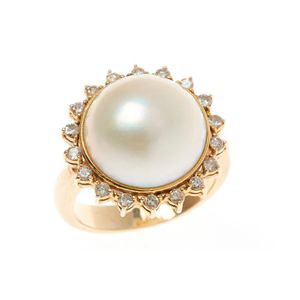Antique Engine-Turned Locket with Scroll Decoration
You must be a subscriber, and be logged in to view price and dealer details.
Subscribe Now to view actual auction price for this item
When you subscribe, you have the option of setting the currency in which to display prices to $Au, $US, $NZ or Stg.
- Engine Turned - Engine turning is a decorative technique used on metal surfaces to create intricate curving or geometric pattern. The process involves cutting a series of lines into the surface of the metal using a rose engine or decoration lathe which rotates the metal as it cuts, allowing the operator to create a repeating pattern that covers the entire surface. The resulting surface has a shimmering, reflective quality that is often described as "engine turned." Where an engine turned item has been enamelled, the term used to describe the decoration is usually guilloche.
Engine turning was originally developed to decorate metal objects such as firearms, scientific instruments, and other metal objects that required precise and elegant design. - Manner of .... / Style of ..... - A cataloguing term where the item, in the opinion of the cataloguer is a work in the style of the artist, craftsman or designer, possibly of a later period.
- Carat - A carat (abbreviated "ct") is a unit of measurement used to describe the weight of a diamond or other gemstone, and separately is a unit of measurement used to describe the weight of precious metals such as gold,.
For gemstones, one carat is equal to 0.2 grams or 200 milligrams. The weight of a diamond is one of the Four Cs (along with cut, colour, and clarity) that are used to determine a diamond's value.
It is important to note that a diamond's weight does not necessarily correspond to its size. A diamond's cut, which affects how well it reflects light, can make a diamond of a lower weight appear larger than a diamond of a higher weight. Additionally, the carat is not the only factor to determine the value of a diamond, other factors such as clarity, colour and cut are important too.
In the gold industry, the purity of gold is measured in carats (abbreviated "ct"), with 24 karats being pure gold and lower carat numbers indicating a lower purity level. So, for example, 18 carat gold is 18/24 or 75% pure gold, and 12 carat gold is 12/24 or 50% pure gold.
This item has been included into following indexes:
Visually similar items

An early Victorian pinchbeck and gold locket, circular form. The surrounding carved scroll and floral pinchbeck mount with engine turned 9ct gold back. Carved pinchbeck top ring, circa 1840. Boxed.

A silver sovereign case, traditional round form with the exterior decorated in a snakeskin effect, marks rubbed.

Dobele & Co. A gold, enamel and diamond-set hunting cased watch case 15380 Continental circa 1860, lever movement, fully jewelled, white enamel dial, Roman numerals, outer Arabic minute track, gold cuvette signed and numbered Dobele & Co. Geneve no. 15380,

A 14ct gold mabe pearl and diamond ring, 14.89 mm cultured mabe pearl to surround of 18 round brilliant cut diamonds, size Q.
